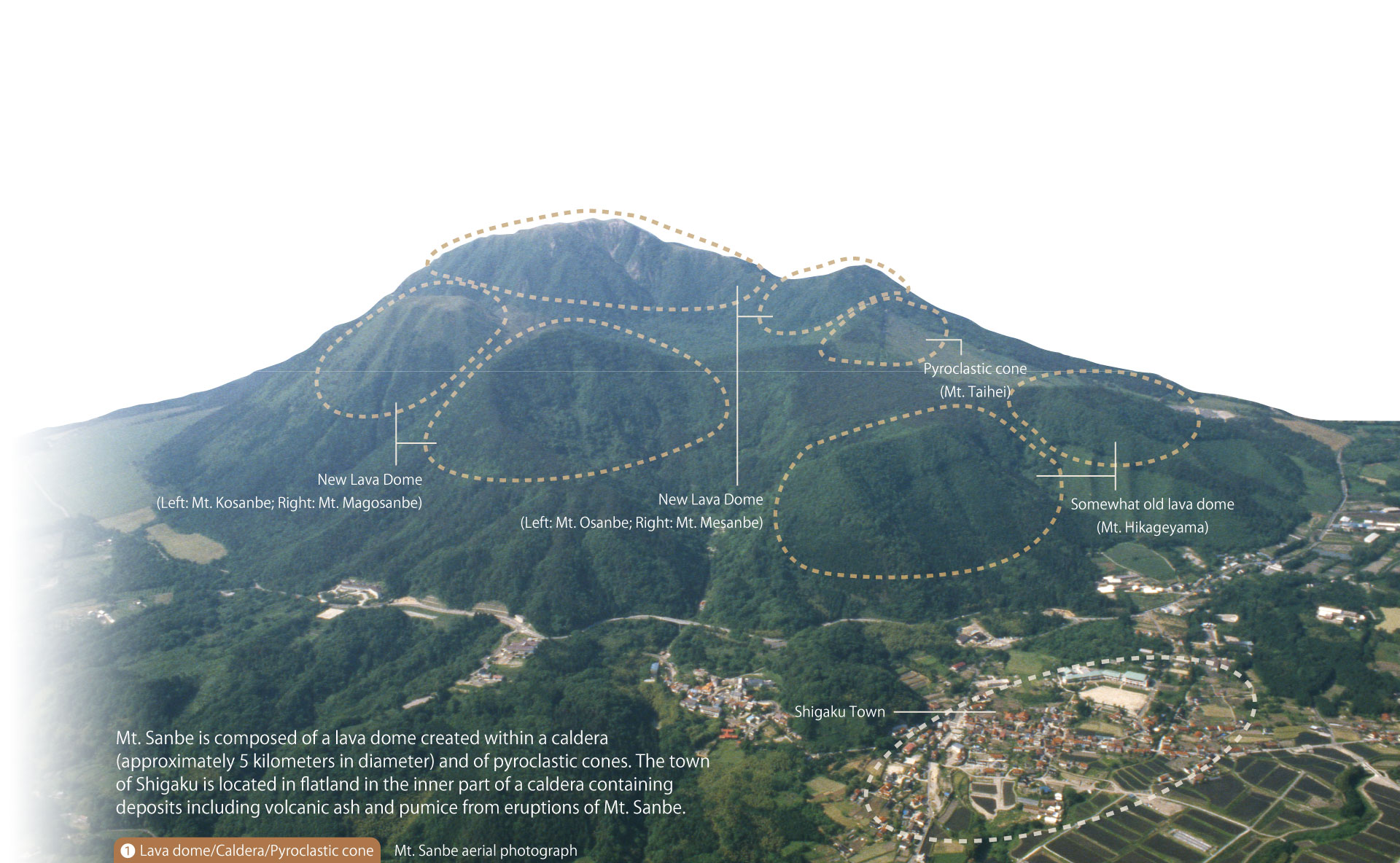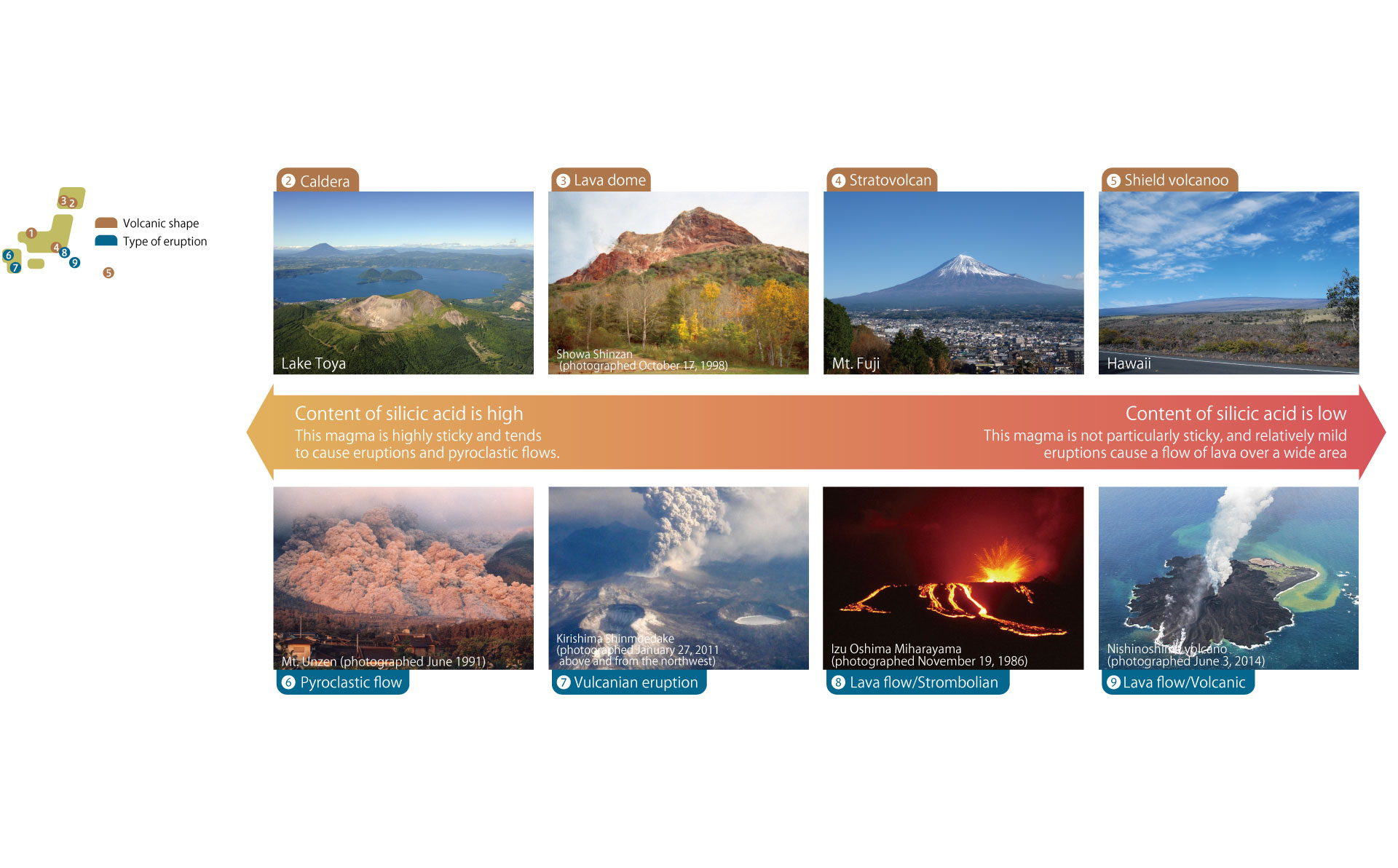Volcanic Features and Mt. Sanbe
Volcanic Features and Mt. Sanbe
Volcanoes are distinctive terrain forms produced when magma deep in the earth’s crust erupts through the crust or through the bottom of a body of water.
There are various types of volcanoes, including stratovolcanoes like Mt. Fuji, caldera like Mt. Aso, or shield volcanoes like those found in Hawaii. Sanbe Volcano is composed of elements such as caldera, lava domes (Mt. Osanbe and others) and pyroclastic cones (Mt. Taihei).


Mt. Sanbe is composed of a lava dome created within a caldera (approximately 5 kilometers in diameter) and of pyroclastic cones. The town of Shigaku is located in flatland in the inner part of a caldera containing deposits including volcanic ash and pumice from eruptions of Mt. Sanbe.
New Lava Dome (Left: Mt. Kosanbe; Right: Mt. Magosanbe)
New Lava Dome (Left: Mt. Osanbe; Right: Mt. Mesanbe)
Pyroclastic cone (Mt. Taihei)
Somewhat old lava dome (Mt. Hikageyama)
Shigaku Town
1. Lava dome/Caldera/Pyroclastic cone
Mt. Sanbe aerial photograph
2. Caldera
Lake Toya
3. Lava dome
Showa Shinzan (photographed October 17, 1998)
4. Stratovolcano
Mt. Fuji
5. Shield volcano
Hawaii
6. Pyroclastic flow
Mt. Unzen (photographed June 1991)
7. Vulcanian eruption
Kirishima Shinmoedake (photographed January 27, 2011 above and from the northwest)
8. Lava flow/Strombolian eruption
Izu Oshima Miharayama (photographed November 19, 1986)
9. Lava flow/Volcanic plumes
Nishinoshima volcano (photographed June 3, 2014)
Content of silicic acid is high
This magma is highly sticky and tends to cause eruptions and pyroclastic flows.
Content of silicic acid is low
This magma is not particularly sticky, and relatively mild eruptions cause a flow of lava over a wide area